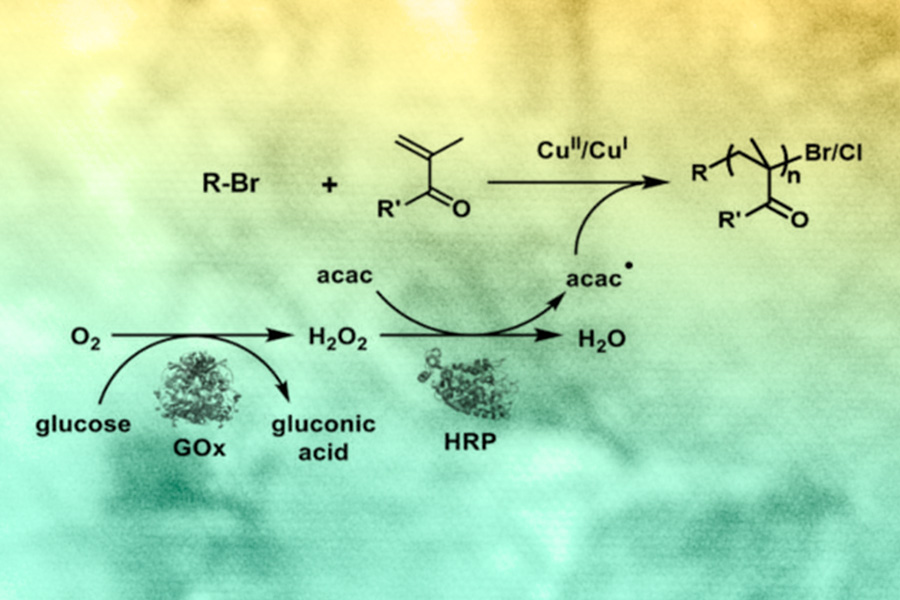
Oxygen Breathes New Life into Radical Polymerization
By Jocelyn Duffy
Media Inquiries- Associate Dean for Communications, Mellon College of Science
- 412-268-9982
Carnegie Mellon chemists have developed a new, “oxygen-fueled” method of atom transfer radical polymerization (ATRP) that could extend the use of the powerful polymerization method to sensitive biological systems and allow the process to be carried out under normal atmospheric conditions. Their findings are published in Angewandte Chemie.
ATRP, a controlled polymerization method discovered by J.C. Warner Professor of the Natural Sciences Krzysztof Matyjaszewski at Carnegie Mellon in 1994, allows scientists to build polymer chains in a piece by piece fashion, providing a high level of control over macromolecules’ weight, dispersity and architecture. Matyjaszewski has refined the technique over the last quarter century, making it more efficient and environmentally friendly.
Oxygen is the enemy of many ATRP reactions - it poisons ATRP activators and stabilizes the radicals created during the process, halting the formation of polymer chains. To minimize oxygen exposure, ATRP reactions are usually carried out in solvents and in an anaerobic, closed environment.
To surmount this problem, Matyjaszewski and colleagues developed a biocatalytic system using glucose oxidase, horseradish peroxidase and an active copper catalyst complex that, when exposed to a glucose and acetylacetonate substrate, creates an enzymatic cascade that not only removes oxygen from the reaction, but uses the oxygen to fuel the controlled polymerization process. Oxygen is so vital to this polymerization system that the reaction stops when all oxygen is removed.
“The oxygen breathed life into the living polymerization,” said Matyjaszewski.
This new method takes away many of the restrictions as to where an ATRP reaction can be done. Scientists could now use the technique to make well-defined polymers, such as those used in coatings, under normal atmospheric conditions without the need for complex laboratory setups.
The researchers also demonstrated that the oxygen-fueled ATRP could be used in more sensitive biological systems. They were able to use the process to synthesize protein-b-polymer and DNA-b-polymer bioconjugates.
Additional study authors include: Alan E. Enciso, Liye Fu, Sushil Lathwal, Mateusz Olszewski, Zhenhua Wang and Subha R. Das from Carnegie Mellon’s Department of Chemistry, and Alan J. Russell from Carnegie Mellon’s Department of Chemical Engineering.
The study was supported by the National Science Foundation, the Mexican Council for Science and China Scholarship Council.
Originally published: https://www.cmu.edu/mcs/news-events/2018/1211_oxygen-fueled-atrp.html